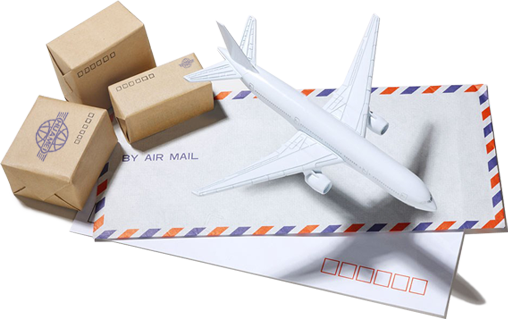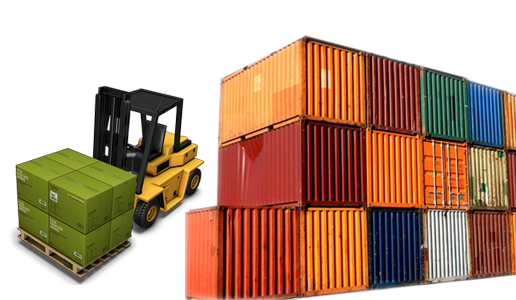Punch Press FCL and LCL Sea Freight Export from Shenzhen and Guangzhou to the USA, Europe, and Australia with Tax-Inclusive Customs Clearance and Door-to-Door Service
Introduction: In the containerized ocean freight export of punching machines, we offer special line services from Shenzhen, Guangzhou to the USA, Europe, Australia, ensuring customs and taxes included, direct express shipping, door to door shipping. Whether it's full container or LCL shipping, we're dedicated to offer you an efficient, safe, and convenint logistics solution, allowing your punch preess
ensuring seamless operation of your stamping equipment in global markets.
During today's rapid growth of international manufacture industry, punch press as critical manufacture equipment, whose international market demands are increasing. However, about complicated international logistics processes, how to ensure safely and conveniently send punch press to overseas customers, which is a big challenge for business. Therefore, we grand lunch a service "Punch press FCL and LCL sea freight export from Shenzhen and Guangzhou to the USA, Europe, and Australia with tax-Inclusive customs clearance and door-to-door service."
Offering you an one-stop and full logistics solution. Whether you choose FCL or LCL, we all ensure a transparent price, customs and taxes included, direct express shipping, realizing "Door-to-Door" experience.
Price and Timeliness for Punch Press Sea Freight to the USA, Europe, Australia:
The price and timeliness of punch press sea freight to the USA, Europe, Australia will vary depending on multiple factors. Generally speaking, we can offer you a customized shipping solution and details quotation based on market situation and your specific needs and budget. Typically, punch press reach the USA, Europe or Australia around 3-6 weeks, or may vary depending on other factors. If you have any questions or need quotation, please contact our logistics team for detailed goods description, we will customize a logistics solution for you. Here're few factors that affect price and delivery time:
Price for Punch Press Sea Freight to the USA, Europe, Australia:
We provide transparent and competitive pricing strategies to ensure that every customer’s budget is reasonably arranged. Specifically, our pricing includes the following aspects:
Full container and LCL freight charges: We offer two options based on the volume and weight of the goods - full container load (FCL) and less than container load (LCL).
Tax-inclusive service: Covers all export and import duties to avoid extra fees.
Double clearance service: Provides customs clearance at both the port of departure and destination port for seamless end-to-end logistics.
Door-to-door service: Includes all necessary loading, unloading, and transportation costs from the shipping origin to the final destination.
Timeliness for Punch Presses Sea Freight to USA, Europe, Australia:
Time is one of the key points of our service to ensure that your punches arrive at your destination in the shortest time:
Clippers transportation: Clippers transportation is adopted. The average transportation time from China to the west coast of the United States is about 15-25 days, Europe is 25-35 days, and Australia is 30-40 days.
Pre-arrangement: Estimate the shipment time in advance to ensure that the goods are on time.
Quick customs clearance: Double customs clearance services ensure quick customs clearance at the destination port to avoid delaying time.
Packaging Requirements for Punch Presses Export:
As a large, precise and heavy-duty mechanical equipment, the punch press has relatively high requirements for shipping export packaging to ensure that there is no damage during transportation. The following are the main requirements for maritime export packaging of punch presses:
Selection of packaging materials
- Wooden packaging: Sturdy wooden boxes or crates are usually used to provide adequate support and protection. The wooden box should be covered with moisture-proof materials, such as plastic film or moisture-proof paper, to prevent moisture and mildew.
- Shockproof materials: Use foam plastic, bubble film, shockproof cotton and other materials to fill the gaps to absorb impact and vibration during transportation.
- Waterproof material: The exterior is covered with waterproof canvas or plastic film to prevent sea and rainwater from invading.
Packaging structure
- Fixed structure: The punch press should be fixed in the wooden box with wooden strips or steel strips to prevent displacement during transportation.
- Reinforced frame: There should be a reinforced frame around the wooden box to enhance the overall strength and prevent the box from deforming or rupturing.
- Ventilation holes: If the punch press needs ventilation, an appropriate amount of ventilation holes should be installed on the box and covered with dustproof net.
Logo and label
- Warning signs: paste warning signs such as "fragile items" and "careful and easy" on obvious locations outside the packaging.
- Tag information: including information such as the name, weight, size, destination, etc., as well as barcodes or QR codes for scanning and identification.
- Mark: According to international practice, the export mark should be marked on the packaging, including information such as consignee, consignee, destination port, etc.
Other requirements
- Anti-rust treatment: For metal parts of the punch press, anti-rust treatment should be carried out, such as applying anti-rust oil or wrapping with anti-rust paper.
- Inspection and certification: After the packaging is completed, packaging inspection should be carried out to ensure compliance with international shipping packaging standards (such as ISPM 15) and obtain relevant certification.
- Document preparation: Provide complete packaging list, packing list, transportation insurance documents and other documents for smooth clearance.
The requirements for the export packaging of punch presses are strictly required to ensure that they are not damaged during long-distance transportation. By selecting the appropriate packaging materials, designing the reasonable packaging structure, correctly marking and handling anti-rust, the punch press can be effectively protected and safely arrived at the destination. Choosing a professional packaging and logistics service provider can further reduce risks and improve transportation efficiency.
Precautions for Punch Press Shipping Export:
Due to its high precision and expensive value, punch presses need special attention to safety and protection measures during sea transportation export. Here are some key notes to help ensure your cargo arrives at your destination safely:
Compliance Inspection:
Importing Country's Regulations: Ensure that the equipment meets the import standards and regulations of the destination countries (the United States, Europe, Australia) to avoid being returned or fined for non-compliance.
Special License: Some equipment may require an export license or other government approval documents, which should be verified and obtained before shipment.
Packaging and Label:
Professional Packaging:
Shock-proof Measures: Wrap the equipment with high-density foam or bubble wrap to minimize the impact of transportation vibrations on it.
Moisture proof and Water-proof: Ensure that the packaging is waterproof and moisture-resistant, especially around the electrical components of the equipment.
Fixed: The equipment is secured inside the box with padding to prevent movement and damage during transportation.
Clear Label:
Consignee's information: Ensure clear consignee's information and destination on the packaging.
Warning Mark: Label should be clear if equipment are dangerous goods or need special treatment.
Document Preparation:
Complete Document: Prepare and submit all required export and import customs documents including commercial invoice, packing list, B/L by sea, certificate of origin, etc.
Compliance Certificate: If necessary, prepare compliance documents like quarantine and inspection certificate and export license, etc.
Logistics and Transport:
Choose reliable logistics: Choose a logistics company with good recordings and professional knowledge ensuring that the goods can get compensation when damaged and lost.
Insurance Coverage: Purchase appropriate marine cargo insurance for the equipment to ensure compensation in case of any loss or damage during transportation.
Cargo Tracking: Utilize modern logistics technology, such as GPS tracking systems, to monitor the real-time location of goods, ensuring visibility of the transportation status.
Emergency Solution:
Communication mechanism: Establish an efficient communication mechanism with logistics companies to ensure prompt information and solutions in case of unexpected situations.
Backup plan: Develop contingency plans for potential delays or issues, such as selecting alternative routes or postponing sales arrangements.
Customs Cooperation:
Pre-communication: Communicate with the destination country's customs in advance to understand possible inspection and clearance requirements, reducing potential delays.
Compliance Declaration: Ensure that all reported information is accurate to avoid issues caused by incorrect reporting.
By following the above precautions, you can significantly reduce the risks associated with exporting stamping machines by sea, ensuring that the equipment arrives safely and on time for international customers. Our professional team will guide and support you at every stage, ensuring your logistics process is efficient and worry-free.
Stamping machine sea export customs clearance documents and procedures:
When exporting punching machines from Shenzhen or Guangzhou to the United States, Europe, or Australia by sea, preparing and handling customs clearance documents is crucial for ensuring a smooth logistics process and timely delivery of goods. Here is a detailed guide on customs clearance documents and procedures:
Customs Documents Preparation:
Before exporting stamping parts, you need to prepare and submit the following key documents to customs:
Commercial Invoice:
Content: Includes detailed information such as product description, quantity, unit price, total price, and country of origin.
Purpose: Used by customs for estimating tariffs and confirming the value of goods.
Packing List:
Content: Provide detailed information on the packaging of goods, including the quantity, weight, and volume of each package.
Purpose: To assist customs in verifying the information of goods against the customs declaration form.
Bill of Lading:
A certificate confirming the loading of goods onto the vessel, including details such as the carrier, shipper, consignee, description of the goods, port of departure, and destination port.
Purpose: as a certificate of pickup and proof of ownership.
Export Declaration:
Content: This includes detailed descriptions of the goods, quantities, value, place of departure, destination, and other relevant information.
Usage: Declare goods to customs, and attach other relevant documents if necessary.
Certificate of Inspection:
Content: Issued by the inspection and quarantine authorities, this certificate proves that the goods meet relevant quality, safety, and hygiene standards.
Usage: Demonstrate compliance of goods to the importing country.
Certificate of Origin:
Content: Prove that the goods are originated in a specific country and may affect import tariffs and quotas.
Usage: Content: Prove that the goods are originated in a specific country and may affect import tariffs and quotas.
Export License (If necessary)
Content: Issued by the relevant authorities, authorizing the export of specific goods.
Usage: Suitable for goods that require special permits.
Insurance Policy:
Content: Proof that the goods have been insured for sea transport.
Usage: Cover the potential losses in transit.
Customs Clearance Processes:
Document preparation: Complete all necessary customs clearance documents before loading the goods onto the ship.
Customs declaration: Submit the export cargo declaration form and other related documents to Chinese Customs for the declaration of goods.
Customs inspection: Customs may inspect the goods to ensure they match the description on the declaration form.
Payment of duties: Pay any applicable statutory export duties.
Issuance of bill of lading: After the goods have been cleared by Customs, the shipping company issues the original bill of lading.
Loading of goods: The goods are loaded onto the ship and the journey begins.
Destination port clearance: Upon arrival at the destination port, the consignee's customs agent uses relevant documents to clear the goods for import, including import declaration, inspection and quarantine, and payment of taxes.
By being well-prepared and following the correct customs clearance procedures, you can ensure that your press machine passes through customs inspections smoothly and is delivered on time and without errors to customers in the United States, Europe, or Australia. Our one-stop service will assist you with all complex documents and processes, ensuring your logistics process is efficient and worry-free.
Insurance Purchasing for Punch machine shipping export:
As a high-value precision equipment, stamping presses involve various risks during ocean freight export, including but not limited to cargo loss, damage, and delays. To protect your interests, purchasing appropriate cargo transportation insurance is essential. Here are some key steps and considerations for buying ocean freight export insurance for stamping presses:
Insurance Type:
Basic Coverage: Typically, it only covers losses caused by major incidents such as the sinking of the ship or a fire.
All Risks Coverage: Apart from basic coverage, include losses caused by accidents (such as collision, storm, etc. ) and natural disasters during transportation.
Specific Risks: About specific risks such as war risk insurance, strike risk insurance, etc.
Purchasing Processes:
Choose an insurance company: Choose an insurance company with a good reputation and rich experience in marine insurance.
Provide Goods information: Provide detailed introduction of punch machine including product type, value, quantity, packaging, etc.
Review insurance amount: Typically goods value includes shipping costs and expected profits.
Consign an insurance contract: Review the insurance terms and exclusions, then sign the insurance contract.
Pay insurance fee: Pay relevant insurance fee based on insurance company's requirements.
Precautions:
Cargo Valuation: Ensure that the value of the goods is accurate; overestimating or underestimating can lead to difficulties in claims.
Insurance term: Read insurance contract carefully for understanding
Transport details: Ensure that transport details (such as routes, loading and unloading methods, etc.) meet insurance requirements.
Keep records: Retain all documents and records related to goods, insurance, and transportation for claims when necessary.
Claims process:
Report damage: Immediately notify the insurance company and provide an initial loss report after goods are damaged or lost.
Inspection and assessment: The insurance company may send personnel for on-site inspection or request relevant evidence.
Submit claim documents: Provide documents such as the insurance policy, bill of lading, invoice, packing list, and loss report.
Claim review: The insurance company reviews the claim request to confirm if it meets the payout criteria.
Compensation: If approved, the insurance company will proceed with the payout.
Purchasing appropriate marine insurance not only protects your goods but is also an essential part of compliance. Consult with experienced insurance advisors or contact insurance companies directly to ensure the safe transportation of your press brake.
Choose our press machine sea freight service for an efficient, safe, and hassle-free logistics solution. By partnering with us, you align yourself with an experienced, professional, and reliable ally. We understand that each shipment carries the trust and expectations of our clients, so we always put customer needs at the forefront, optimizing every step to ensure timely and secure delivery to your destination. Let us help you expand into broader international markets—whether it's the United States, Europe, or Australia—your press machines will reach their destinations smoothly, propelling your business towards global success.











